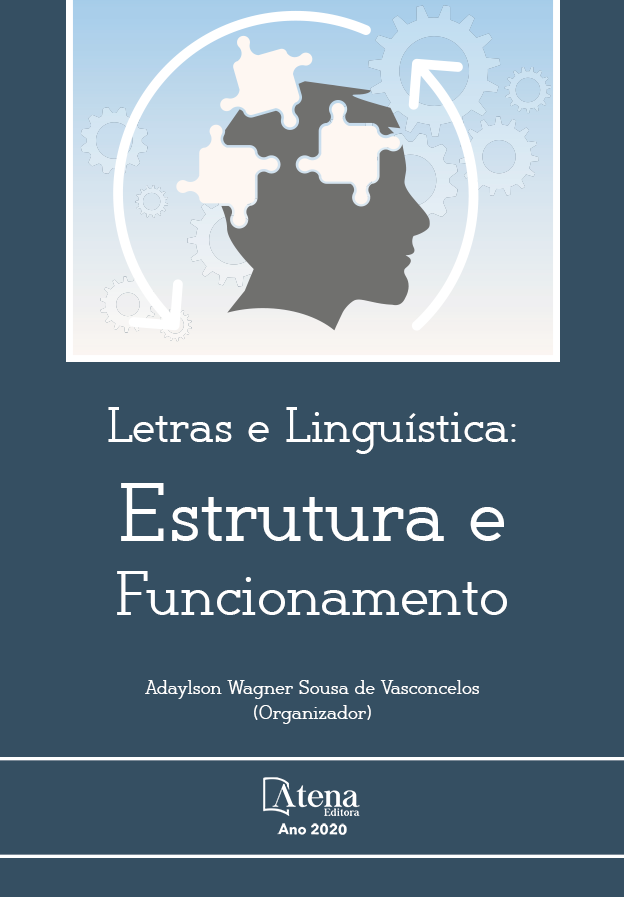
CENOGRAFIA E ETHOS DISCURSIVO NA NARRATIVA LITERÁRIA: UMA ANÁLISE DO CONTO O BARRIL DE AMONTILLADO, DE EDGAR ALLAN POE
A união entre Análise do Discurso e Literatura mostra-se cada vez mais frutífera, uma vez que a AD fornece métodos teóricos eficientes para a análise de todo tipo de discurso, permitindo ir além dos limites linguísticos do texto, analisando-os mais profundamente. Dessa forma, a AD torna-se um importante mecanismo para a compreensão dos enunciados, tendo eles qualquer extensão ou pertencendo a qualquer tipo ou gênero textual. Nessa perspectiva, nosso estudo objetiva investigar a cenografia como elemento essencial no processo de construção do ethos discursivo do narrador no conto “O Barril de Amontillado” de Edgar Allan Poe, escrito em 1841 e publicado em livro em 1846. Privilegiamos como aporte teórico-metodológico a Análise do Discurso de linha francesa, em particular, os estudos propostos por Dominique Maingueneau (2005, 2008, 2012, 2013, 2015) sobre a noção de cenografia e de ethos discursivo identificados pelas marcas linguístico-discursivas presentes na narrativa em questão. O resultado desta análise se torna bastante relevante para entendermos como a cenografia contribui para legitimar um enunciado, tornando-se um elemento ativo e essencial no processo de construção da imagem de si no discurso narrativo. A pesquisa evidenciou que as cenografias instituídas pelos discursos no conto em análise influenciaram diretamente na construção da imagem do enunciador, ou seja, o “ethos assassino” do personagem Montresor.
CENOGRAFIA E ETHOS DISCURSIVO NA NARRATIVA LITERÁRIA: UMA ANÁLISE DO CONTO O BARRIL DE AMONTILLADO, DE EDGAR ALLAN POE
-
DOI: 10.22533/at.ed.5352002105
-
Palavras-chave: Narrativa literária; Cenografia; Ethos discursivo; O Barril de Amontillado.
-
Keywords: Literary narrative; Scenography; Discoursive ethos; The Cask of Amontillado
-
Abstract:
Getting together Discourse Analysis and Literature has been increasingly being more productive, once Discourse Analysis offers efficient theoretical methods for analyzing any kind of speech, allowing one to go further than the linguistic limits of the text in a deeper analysis. So, DA is an important mechanism for understanding wordings, whether they have any kind of extension of belonging to any textual type or genre. In this perspective, our study aim to investigate scenography as a fundamental element on the process of discursive ethos’ construction of the narrator in the short story “The Cask of Amontillado”, from Edgar Allan Poe, written in 1841 and published in 1846. We used with intensity the methodological-theoretical contributions from the French Discourse Analysis, mainly the studies from Dominique Maingueneau (2005, 2008, 2013, 2015) about the notion of scenography and of the discursive ethos, considering the linguistic-discursive marks present on the narrative. The result of this analysis becomes relevant to understand how scenography contributes to a legitimization of a wording, making it an active and essential element in the process of image construction of itself and of the narrative discourse. The research highlighted that scenography instituted by the speeches on the short story had influence on the enunciator construction of the image, in other words, the “assassin ethos” from the character Montresor.
-
Número de páginas: 17
- ERNANI CESAR DE FREITAS
- RITA DE CÁSSIA DIAS VERDI FUMAGALLI


